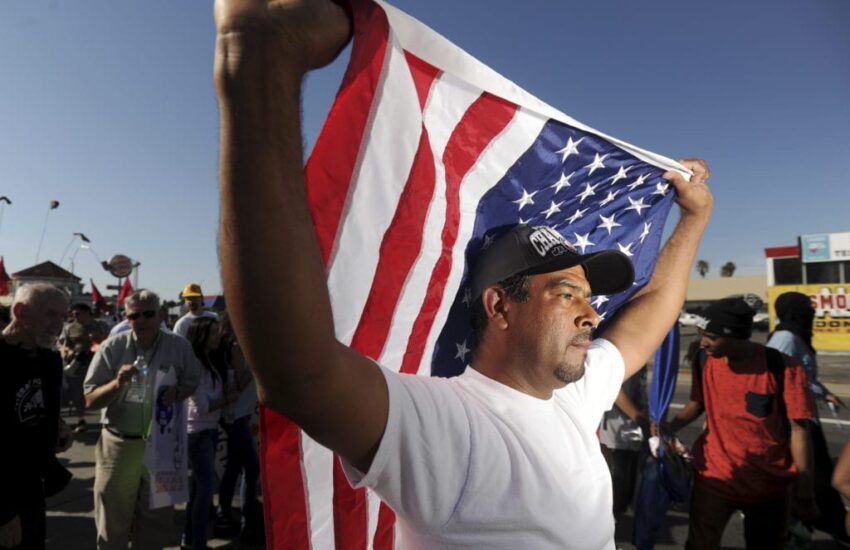I recall sitting in a college sociology class, half-listening to a lecture, when the professor made a statement that has stuck with me. He argued that societies are not static monuments but living, breathing organisms that change with every new person who arrives. I looked around the room and saw the truth of it. The kid next to me, whose parents had emigrated from Korea, was planning to be a doctor. Another friend, whose grandparents came from Mexico, was debating whether to attend law school. Their stories were not footnotes to American history; they were central to its next chapter. That is the core of any meaningful sociological perspective on immigration: it is the study of how we remake each other. Let’s discuss what happens when people move. Political debates are often so loud and focused on simple numbers that they overlook the entire human story. The real effects of immigration on society are far more complex and, frankly, more interesting than any soundbite can capture. It is not just about demographics shifting on a chart. It is about our schools, our workplaces, and the very culture we share every day. You hear the word “assimilation” thrown around a lot, as if it is a straight line everyone is supposed to walk. But from what I have seen, that is not how it works. Think about your own family. To blend in. Now, you might be trying to reclaim some of that lost heritage. This messy, non-linear journey is what sociologists refer to as segmented assimilation. Some groups find economic mobility quickly, while others face stubborn barriers. It is not a reflection of individual effort, but instead of the opportunities or lack thereof that our society makes available. The quality of local schools, the networks that lead to good jobs, and the presence of discrimination; these structural factors shape the journey more than anything. Our institutions are forced to adapt, and honestly, that is often a good thing. I have a friend who teaches in a school district with a large number of immigrant families. She told me about the incredible new language programs they have developed, which now help native English speakers who struggle with reading as well. This exploration of immigration’s societal impact is not just academic; it is about understanding the fabric of our shared communities, from economic contributions to cultural vibrancy. The hospital in my city has initiated a cultural competency program that has enhanced patient care for everyone, not just newcomers.

When we are pushed to be more inclusive, we often discover better ways of doing things for all of us. This is the part where people get really tense, right? The big question: do immigrants help or hurt the economy? The easy, political answer is to pick a side. The truth, as it usually is, is more nuanced. On the whole, the economic impact of immigration is overwhelmingly positive. Immigrants start businesses at a stunning rate, they fill crucial gaps in our labor force from tech to agriculture, and they are net contributors to our tax base. But to say there are no friction points would be dishonest. The benefits are not always felt evenly. If you are a working-class person in an industry that sees a sudden influx of new workers, you might feel a squeeze on your wages. That is a real concern. Yet, in other sectors, especially those requiring high levels of education, immigrants drive innovation and create jobs. The key is to acknowledge the full picture. The overall economic pie grows, but we need to be thoughtful about how the slices are divided. This is not an immigration problem; it is a policy problem. How do we support communities in transition? How do we ensure the wealth generated benefits everyone? Those are the questions we should be asking. Perhaps the most visible change, and for some, the most unsettling, is cultural. But have you ever stopped to think about what “American culture” even is? It was never one static thing. It is a delicious, ongoing mixture. The pizza you love? Italian immigrants. The tacos you eat on Tuesday? Thank Mexican communities. Our music, our art, our literature are all products of this continuous blending. The process is not always comfortable. It involves negotiation and, yes, occasional conflict. I think the real magic happens in the second and third generations. These individuals often become incredible cultural bridges. They can navigate multiple worlds with ease, bringing perspectives that are invaluable in our globalized world. Their bilingualism is not a deficit; it is a superpower. Their ability to understand different customs is a form of intelligence we desperately need. The strength of a community often comes down to what sociologists call social capital, the networks that connect us. Communities with strong, inclusive institutions, where people actually know their neighbors, tend to navigate these changes much more successfully. Looking ahead, the societal changes from immigration will only continue. The world is more connected than ever. Instead of fearing this change, we have a choice. We can see it as a source of renewal and energy. Understanding immigration from a sociological perspective is not about dry theory. It is about recognizing a fundamental truth: our society is, and always has been, a work in progress. And every new person adds a brushstroke to the painting.
References
Alba, R., & Nee, V. (2003). Remaking the American Mainstream: Assimilation and Contemporary Immigration. Harvard University Press. Publisher page: https://www.hup.harvard.edu/catalog.php?isbn=9780674018136
Portes, A., & Rumbaut, R. G. (2014). Immigrant America: A Portrait (4th ed.). University of California Press. https://www.ucpress.edu/book/9780520286290/immigrant-america
U.S. Census Bureau. (2022). American Community Survey: Foreign-Born Population. https://www.census.gov/topics/population/foreign-born.html
National Academies of Sciences, Engineering, and Medicine. (2017). The Economic and Fiscal Consequences of Immigration. Washington, DC: The National Academies Press. https://nap.nationalacademies.org/catalog/23550/the-economic-and-fiscal-consequences-of-immigration

